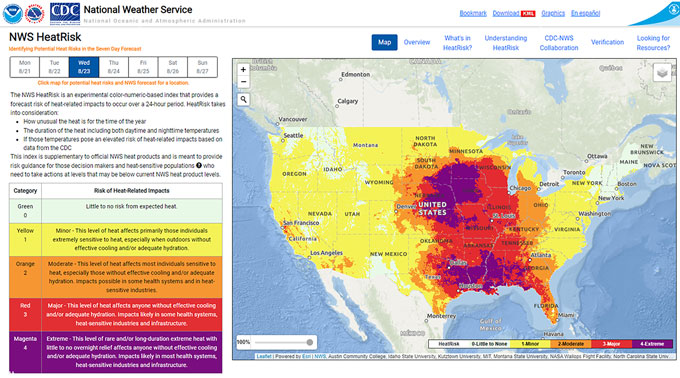A new U.S. tool maps where heat will be dangerous for your health

Summer is coming. After last year’s record-breaking and deadly heat, forecasts show that above-average summer temperatures are likely to return to most of the United States (SN: 12/6/23). But one thing will be different this time around: A new online tool will map and rate the risk to health posed by heat using a five-level color scale.
“You can put in your zip code and see current heat risk and air quality levels and a seven-day heat risk forecast for your area,” Mandy Cohen, director of the Centers for Disease Control and Prevention said April 22 at a news conference unveiling the tool, called HeatRisk. “So, you can plan your day and you can plan your week with your health in mind.”
On average, extreme heat kills more than 1,200 people in the United States each year, the CDC estimates. That’s “more than hurricanes, floods and tornadoes combined,” said Rick Spinrad, head of the National Oceanic and Atmospheric Administration. And heat-related illnesses are even more pervasive, having led to almost 120,000 emergency visits last year (SN: 9/6/23).

Using temperature forecasts from NOAA’s National Weather Service and heat and health data from the CDC, HeatRisk shows where rising temperatures are likely to increase heat-related health impacts. It rates risk with a color-oriented index — from pale green for no risk to deep magenta for extreme risk — based on several factors: how unusual temperatures are for the time of year, the duration of the unusual heat, whether nights will offer cool reprieve and whether temperatures will be hot enough to affect health. Users can zoom into the color-coded map and find local heat forecasts for the week. Another part of the site provides tips on how to recognize signs of heat-related illness and how to stay safe. A Spanish-language version is also offered.
“When it comes to heat, it’s never too early to prepare,” Spinrad said.
Source



